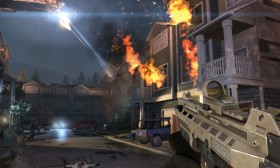Title: Forging Resilience: The Unseen Heroism in 'Hurricane Shelter Sign Installer Simulator VR: Place Missions DLC'
In the vast and often explosive landscape of video games, where players frequently assume the roles of superheroes, elite soldiers, or fantastical adventurers, a new and profoundly different kind of hero is emerging. This hero doesn’t wield a plasma rifle or a magic staff; they carry a toolbox, a stack of reinforced aluminum signs, and a deep sense of civic duty. This is the core premise of the unexpectedly impactful DLC, "Place Missions," for the niche virtual reality title, Hurricane Shelter Sign Installer Simulator VR. Far from a simple gameplay expansion, this DLC is a quiet, thoughtful, and surprisingly tense exploration of preparation, community, and the quiet heroes who work in the calm before the storm.
The base game introduced players to the meticulous trade of installing hurricane-rated shelter signs, teaching them about proper mounting hardware, zoning regulations, and material durability. The "Place Missions" DLC, however, transforms this technical simulator into a powerful narrative and strategic experience. The DLC introduces a dynamic campaign mode set across a sprawling, open-world coastal county named "Cypress Cove." Your task is no longer just to install signs on a per-job basis; you are now the sole certified installer for the entire county, tasked with strategically fortifying the community before the official start of the hurricane season.
The genius of the "Place Missions" DLC lies in its central mechanic: strategic resource allocation under a time constraint. Each in-game day is a precious resource. You start your virtual day in a county operations center, looking at a large map of Cypress Cove pockmarked with potential installation points—schools, community centers, municipal buildings, and even newly constructed safe rooms in residential areas. However, you have a limited supply of signs, brackets, and fuel for your truck. A dynamic weather forecast system, a masterpiece of subtle tension-building, provides a constantly updating probability of storm landfall. That probability ticks up, slowly at first, then with increasing urgency, as the in-game weeks progress.

This is where the simulator transcends its genre. You are not just playing; you are making gut-wrenching decisions. Do you spend a day installing a dozen signs in the dense, affluent suburbs where the mayor is pressuring you for results? Or do you drive out to the remote, low-income fishing village that has only one aging community hall, knowing the journey will consume half your day and most of your fuel? The game doesn’t judge you explicitly, but the consequences of your choices are felt deeply. The VR interface makes these decisions intensely personal. Holding a clipboard with the list of locations, physically looking at the map, and hearing the crackle of the weather radio update in your headset creates an immersive weight of responsibility.
The actual "Place Missions" are where the game's VR mechanics shine. Installing a sign is a multi-step physical process. You must reach into your toolbelt, retrieve the correct drill bit, secure the heavy sign against the wall, ensuring it is perfectly level, and drive the corrosion-resistant bolts into the pre-marked concrete or steel frame. A strong gust of wind—a precursor to the coming storm—can make your virtual hands shake, causing you to fumble a bolt. The sound design is critical here: the whirring of the drill, the satisfying click of the bolt tightening to the correct torque spec, and the ever-present, haunting sigh of the wind. It’s meditative yet fraught with underlying anxiety.
As the storm probability climbs above 70%, the game shifts tone. The sky darkens, a light drizzle begins, and you start receiving urgent calls from the emergency management director. The strategic layer collapses into pure, desperate execution. You are no longer planning; you are reacting. Can you get to the newly built elementary school on the other side of the river before the bridges close? The mission is no longer about perfection; it’s about completion. A poorly installed sign might hold, or it might not. The game forces you to confront the reality that in a true emergency, "good enough" is often the best that can be achieved.
The emotional payoff of the "Place Missions" DLC doesn’t come from a flashy cutscene or a boss battle. It arrives in the post-storm report. Once the hurricane passes, you are tasked with surveying the areas you fortified. Driving through a rain-soaked, debris-strewn Cypress Cove is a somber experience. You see the results of your labor. A sign you installed perfectly, standing firm and clear, directing survivors to safety. And perhaps, with a sinking heart, you see another—one you rushed in the pouring rain—hanging by a single bolt, or worse, lying on the ground. The game quantifies your impact with a "Lives Saved" estimate based on the accessibility and integrity of your signs, a number that is humbling to behold.
"Hurricane Shelter Sign Installer Simulator VR: Place Missions DLC" is a triumph of serious game design. It uses the immersive power of VR not for escapist fantasy but for empathetic understanding. It is a tribute to the countless unseen public works employees, emergency planners, and first responders whose painstaking, unglamorous work forms the backbone of community resilience. This DLC argues that true heroism isn’t always about reacting to a disaster; it’s about the diligent, thoughtful, and often stressful work of preventing it. It’s a game that stays with you long after you take the headset off, a quiet reminder of the fragility of our systems and the profound importance of those who work to hold them together.

















